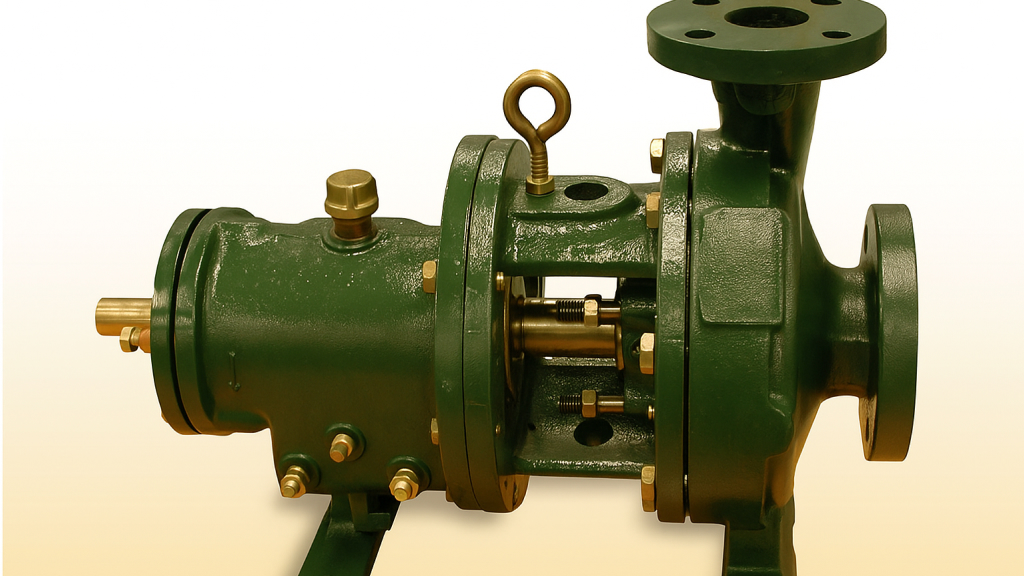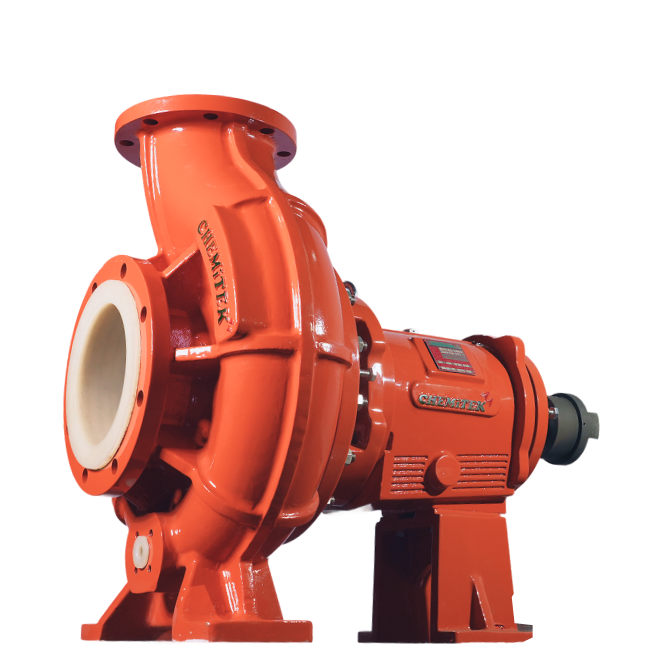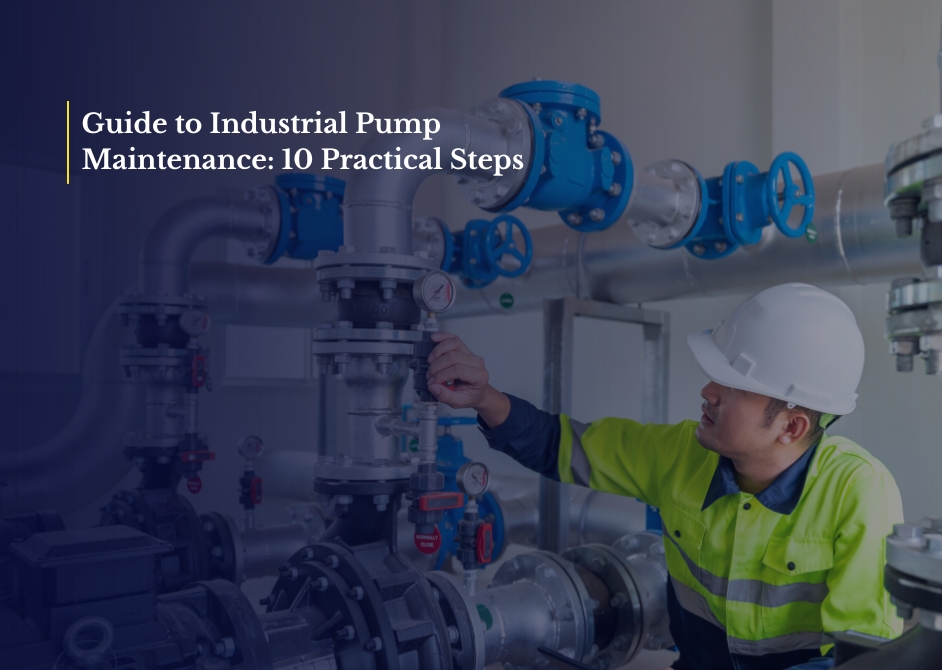Industrial pumps account for nearly 25% of total energy use in manufacturing, yet much of that energy is lost due to poor mechanical upkeep. Issues like misalignment, clogged impellers, and irregular lubrication often go unnoticed until they cause major disruptions.
This makes industrial pump maintenance not just a preventive measure but a cost-saving strategy. From corrosive chemicals to viscous food products and wastewater, reliable pump performance supports consistent output, energy efficiency, and regulatory compliance.
In this guide, we break down 10 critical steps that help you maintain peak pump performance, reduce unplanned downtime, and protect high-value equipment, regardless of the application.
Key Takeaways:
- Industrial pump maintenance includes routine inspections, servicing, and timely part replacements to maintain safe and efficient performance.
- It is essential for preventing failures, extending pump lifespan, and lowering operational and repair costs across industrial applications.
- Core steps involve real-time monitoring, alignment checks, proper documentation, use of OEM-certified parts, and team training.
- A standard maintenance checklist covers daily visual inspections, monthly lubrication, and quarterly internal assessments.
- Best practices follow pump standards, use API and OEM guidelines, and rely on clear maintenance records for consistent plant performance.
To understand the value of pump maintenance, let’s start with what goes wrong when pumps are ignored.
Understanding the Importance of Industrial Pump Maintenance

Centrifugal industrial pumps, including both metallic and non-metallic types, operate under tough conditions. They handle high-pressure fluids, extreme temperatures, and corrosive or abrasive media.
These factors cause gradual wear over time. If not addressed early, this wear can lead to unexpected shutdowns and costly failures. Industrial pump maintenance plays a key role in preventing such issues.
Common issues include:
- Seal failure: Often results from dry running, shaft misalignment, or chemical corrosion. Leaking seals can compromise system pressure and lead to hazardous spills.
- Bearing damage: Caused by vibration, excessive heat, or poor lubrication. Damaged bearings increase shaft misalignment and reduce pump lifespan.
- Impeller erosion: Occurs when aggressive fluids or suspended solids erode the impeller surface, leading to reduced flow and efficiency.
- Cavitation: Triggered when inlet pressure drops below vapor pressure, forming bubbles that implode and damage internal components, especially the impeller.
- Motor overload: Happens when there’s a clog, closed valve, or excessive backpressure, causing the motor to draw more current and overheat.
With the basics clear, here are the essential steps you need to follow.
Industrial Pump Maintenance Steps: A Complete Checklist

Behind every smooth-running plant is a network of pumps working quietly in the background. When these systems fail, the impact reaches beyond downtime.
It can throw off production schedules, stretch resources thin, and lead to higher operational costs. Consistent and well-planned maintenance helps avoid these disruptions by keeping performance steady.
Here’s a comprehensive checklist that outlines what to look for, why it matters, and how to get it right.
1. Develop a Tailored Maintenance Plan
Maintenance schedules should reflect how, where, and what your pump is handling. Applying a generic routine across different units can result in neglected components or unnecessary service interventions.
Why this matters:
- Pumps handling abrasive slurry (like in mining) or corrosive fluids (like H₂SO₄ in chemical plants) experience accelerated internal erosion and seal degradation, requiring service intervals as short as 200–300 operating hours.
- Consider runtime (hours/day), ambient and fluid temperature, discharge pressure, pump speed (RPM), and chemical compatibility to define inspection frequency.
- For continuous processes, vibration and oil analysis should be done monthly; in batch applications, align checks with every operational cycle.
Result: Custom scheduling ensures predictive care that aligns with duty cycles and usage intensity, lowering unplanned shutdowns.
2. Conduct Routine Visual Inspections
Not all signs of wear show up in trend data. Many issues begin with what you can see. Regular walkdowns provide valuable early indicators of potential failures
What to look for:
- Drips or stains near mechanical seals may indicate hard face wear or spring failure.
- Anchor bolt movement or loose grout under baseplate can lead to shaft misalignment > 0.2 mm TIR.
- Paint discoloration, soot, or rust at casing or motor base can indicate overheating above 90°C.
- White deposits or cloudy buildup around grease fittings may signal water ingress or incompatible lubrication.
Result: Frequent checks prevent systemic damage by addressing localized wear early.
3. Monitor Fluid Levels
Your pump depends on more than mechanical components. Fluid levels directly influence performance, safety, and lifespan. Whether it’s lubrication oil or seal flush, small deviations can trigger major issues.
Why this matters:
- Lubricating oil below minimum dipstick mark results in >10°C temperature rise at bearings.
- Overfilled sumps may cause foaming and pressure surges in labyrinth seals.
- For mechanical seals, improper flush flow (below API Plan 32 recommendations) may allow solids entry, damaging seal faces.
Result: Accurate levels maintain pressure integrity, prevent overheating, and reduce contact wear between rotating parts.
4. Lubricate Moving Parts
Friction damages rotating equipment, making proper lubrication essential. However, using the wrong grease, applying too much or too little, or mistiming the process can cause just as much harm as neglecting lubrication altogether.
Best practices:
- Use oil or grease rated for your bearing type: e.g., ISO VG 68 for vertical pumps in ambient conditions, or VG 150 for high-temperature zones.
- Apply correct volume: overfilling can cause 20% increase in bearing load, while under-lubrication accelerates metal contact.
- Maintain a log of last lubrication date, type, and quantity. Use labels or QR codes at grease points to prevent cross-contamination.
Result: Proper lubrication lowers friction coefficient, reduces internal temperature rise, and extends bearing life.
5. Check Seals and Gaskets
Seals and gaskets are pressure barriers. When they fail, systems leak, process quality drops, and safety is compromised. Regular inspection helps you stay ahead of failures.
Inspection points:
- Look for salt buildup or staining, as these are signs of weeping seals under pressure.
- Measure flush fluid pressure using inline gauges: should remain 1.5 bar above process pressure for double seals.
- For elastomeric gaskets, check for compression set and chemical hardening using durometer testing (Shore A scale).
Result: Consistent sealing performance ensures no air ingress, no process contamination, and sustained internal pressure.
6. Clean Impellers and Remove Debris
The impeller drives the pump’s hydraulic performance. When it becomes clogged or corroded, it affects overall system efficiency. Regular cleaning and inspection help maintain consistent flow and reduce wear on connected components.
Why this matters:
- Solids buildup can cause dynamic imbalance exceeding 2.5 mm/s (RMS) vibration.
- Fouled impellers can reduce flow by up to 15%, requiring 10–20% more power from the motor.
- In food, pharma, or wastewater applications, debris may carry biological risk or block internal channels.
Result: Regular cleaning keeps the pump hydraulically efficient and reduces strain on the driver motor.
7. Assess Alignment and Balance
Even a slight misalignment between motor and pump shafts can lead to serious vibration, seal damage, and bearing failure. This makes proper alignment a fundamental requirement, not a choice.
What to do:
- Use laser alignment tools for coupling alignment, aiming for total indicator runout (TIR) below 0.05 mm.
- Analyze vibration amplitude across X-Y-Z axes. Radial > Axial vibration often points to imbalance.
- Check for soft foot condition using feeler gauges or dial indicator backlash (< 0.05 mm gap under one foot).
Result: Balanced and aligned units run cooler, draw less current, and prevent shaft and seal failures.
8. Monitor Temperature, Noise, and Vibration
These three metrics are often the first signs of internal distress. A sudden change in any one of them can help you catch a failure before it causes a shutdown.
Monitoring tips:
- A temperature rise of >15°C above baseline may signal bearing failure or lubrication breakdown.
- Rattling indicates cavitation or vane damage; grinding may signal debris between impeller and casing.
- Vibration patterns (e.g., 1X RPM spikes) can pinpoint imbalance, while sidebands indicate motor bar issues.
Result: Routine sensor-based or manual checks allow early response and safer, continuous operation.
9. Replace Worn or Damaged Parts Promptly
Small components often degrade silently and can trigger major failures if ignored. Take action early to avoid costly breakdowns.
What to replace early:
- Bearings with vibration readings >7 mm/s (RMS), or temperature >90°C.
- Impellers with erosion depth >2 mm or blade thinning.
- Seals after 12–18 months of service or 5,000–6,000 runtime hours (whichever comes first).
Result: Timely intervention minimizes unplanned outages and protects upstream and downstream equipment from collateral damage.
10. Maintain Rigorous Documentation and Scheduling
Maintenance without records is guesswork. Proper documentation helps build long-term reliability through consistency and clarity.
Why this matters:
- Use CMMS or Excel logs to track run hours, part replacements, and service frequency by pump ID.
- Record every vibration, temperature, and lubrication reading in a digital format for trend analysis.
- Establish annual audits to validate that all preventive maintenance (PM) steps were executed.
Result: Strong documentation ensures traceability, warranty compliance, and consistent uptime in critical systems.
After covering the core steps in industrial pump maintenance, the next focus is on scheduled routines that keep systems reliable and performance consistent.
Industrial Pump Maintenance: Key Scheduled Tasks
Routine maintenance is essential for preventing pump failure, reducing downtime, and ensuring long-term operational efficiency. Whether your system handles water, chemicals, or slurry.
Below is a practical schedule you can follow to maintain equipment consistently across various industrial environments.
Using a time-based checklist helps detect early signs of wear before they turn into failures. Pumps that receive regular inspections and timely lubrication tend to last longer, operate more efficiently, and meet safety standards more consistently.
Best Practices and Challenges in Industrial Pump Maintenance
Ensuring long-term reliability in industrial pumps takes more than routine care. As systems age, wear and misalignment become more common, especially in high-stakes environments where pump performance is closely tied to safety and compliance. Skipped checks or incorrect part replacements can lead to serious consequences.
Below is a breakdown of key challenges faced by plant engineers and technicians, paired with best practices that can help you solve or prevent them.
1. Lack of Real-Time Monitoring
Manual-only inspections often miss early signs of problems like seal failure, bearing overheating, or cavitation until they escalate into pump breakdowns.
Best Practice: Use predictive tools such as vibration sensors (as per ISO 10816), thermal imaging, and motor current analysis to continuously monitor operating conditions and detect anomalies before failure occurs.
2. Overlooking Alignment Checks
Even a shaft misalignment of more than 0.05 mm can increase wear on seals and bearings, leading to higher vibration and energy loss.
Best Practice: Use laser alignment tools (as recommended by AGMA 9000) to verify shaft alignment during routine checks and reduce mechanical stress on ANSI/ASME B73.1-compliant pump assemblies.
3. Poor Documentation
Without consistent service records, it is difficult to identify recurring issues, leading to missed trends and inconsistent maintenance.
Best Practice: Use a Computerized Maintenance Management System (CMMS) to log inspections, lubrication activities, and part replacements in accordance with ISO 55000 asset management guidelines.
4. Deferred Part Replacements
Delaying replacement of worn seals, bearings, or impellers can result in secondary damage such as shaft scoring or contamination of process fluids.
Best Practice: Replace components at the first sign of wear and keep critical spare parts in inventory to prevent downtime during sourcing delays.
5. Improper Lubricant Application
Both over-lubrication and under-lubrication can lead to bearing overheating, increased friction, and early failure.
Best Practice: Follow OEM-specified lubrication intervals, use correct ISO VG-grade lubricants, and maintain oil or grease levels according to bearing housing guidelines to prevent issues like churning or starvation.
6. Inconsistent Maintenance Scheduling
Unstructured or reactive maintenance often overlooks early signs of wear during high-load operations, increasing the risk of failure.
Best Practice: Develop a preventive maintenance schedule based on operating hours (such as every 2,000 to 4,000 hours), fluid properties, and environmental factors to ensure regular inspections.
7. Use of Non-OEM Parts
Installing non-OEM parts may result in poor material compatibility, dimensional mismatch, or reduced performance lifespan.
Best Practice: Always use OEM-certified high-grade components that match specifications such as metallurgy (for example, ASTM A743 CA6NM) and sealing standards (such as API 682) to ensure long-term reliability.
8. Skill Gaps in Maintenance Teams
Technicians who are not trained on specific pump types may overlook subtle warning signs, use incorrect lubricants, or perform improper installations.
Best Practice: Conduct hands-on training based on OEM manuals and industry standards such as API 610. Include sessions focused on centrifugal pumps with ANSI-compliant configurations common in process plants.
Is keeping your industrial pumps running smoothly becoming a challenge? See how Chemitek can simplify maintenance and improve reliability. Explore here.
Chemitek: Trusted Maintenance Solutions for Industrial Pumps
Consistent industrial pump maintenance is key to keeping equipment efficient, reducing long-term costs, and avoiding unnecessary downtime. At Chemitek Process Equipment Pvt. Ltd., we focus on practical, plant-tested maintenance strategies that help extend pump life and improve overall reliability.
From fluid-specific service intervals to precision checks on seals, alignment, and vibration, our checklist supports continuous and batch operations alike. Whether you're handling slurry, chemicals, or wastewater, the right maintenance plan keeps your pumps efficient and your process stable.
With Chemitek, you get more than just high-performance pumps. You also gain ongoing support that keeps them running at their best, ensuring efficiency and process stability.
Contact us today to choose the right pump and apply the best maintenance plan for your flow rate, duty cycle, and fluid type.
FAQs
1. What is the most important maintenance activity for industrial pumps?
There’s no single step, but lubrication and alignment checks are critical. Misalignment can increase wear on seals and bearings. Inadequate lubrication causes overheating and noise. Combining these checks with visual inspection helps catch issues before they become failures.
2. How often should industrial pumps be maintained?
Basic visual inspections should happen daily or weekly, while lubrication, seal checks, and vibration monitoring should follow a monthly or quarterly schedule. High-load or abrasive applications require tighter intervals. Custom maintenance plans based on pump type, runtime, and fluid properties work best.
3. Why is vibration monitoring important in pump maintenance?
Vibration is an early indicator of problems like imbalance, misalignment, or worn bearings. A sudden spike can signal that a component is nearing failure. Regular vibration checks (manual or sensor-based) help prevent costly downtime and secondary equipment damage.
4. What are the signs of pump misalignment or imbalance?
High vibration, unusual noise, leaking seals, and premature bearing wear are common signs. Misalignment causes excessive axial and radial loads, which affect motor-pump coupling life. Regular laser alignment and foot bolt checks can fix this before damage spreads.
5. How do I know when a pump part should be replaced?
Replace parts when you see performance drops, vibration spikes, or visible wear. Bearings with elevated noise or heat, seals near end-of-life, and impellers with pitting or thinning should be changed before failure. Use runtime logs and vibration trends to guide timing.

Latest posts
Ready to Upgrade Your Process Operations?
